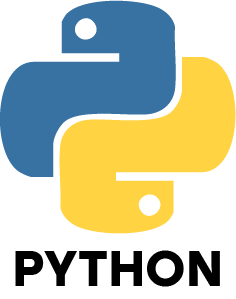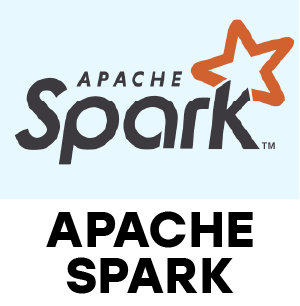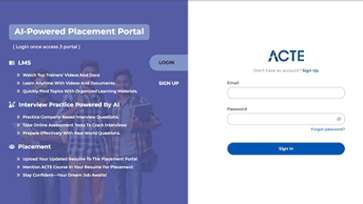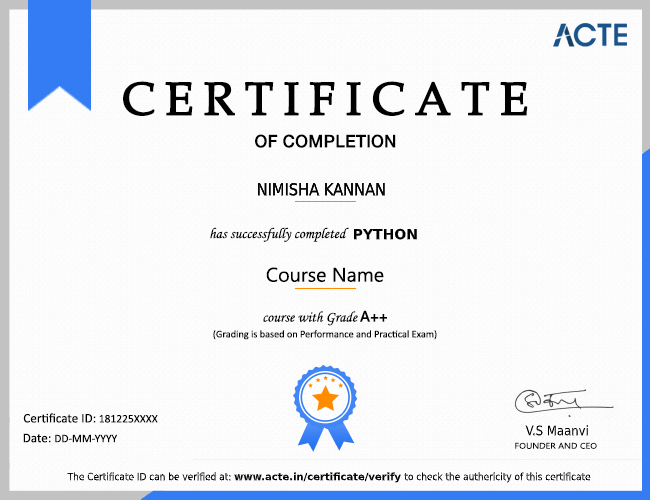Additional Info
Data Science is a multidisciplinary field that extracts meaningful knowledge and insights from large amounts of structured and unstructured data using scientific inference and mathematical algorithms. These algorithms are implemented through computer programmes, which are typically run on powerful hardware due to the large amount of processing required. Data Science is a field that combines statistical mathematics, machine learning, data analysis and visualisation, domain knowledge, and computer science.
The most important component of Data Science, as the name implies, is “Data.” No amount of algorithmic computation can produce meaningful insights from illegitimate data. Data science is concerned with many different types of data, such as image data, text data, video data, time-dependent data, and so on.
History of Data Science
The term "Data Science" has been mentioned in various contexts over the last thirty years, but it is only recently that it has gained international acceptance and recognition. In 2012, Harvard Business Review dubbed it "The Sexiest Job of the Twenty-First Century."
Origin of the Concept
Though it is unclear when and where the concept was originally developed, William S. Cleveland coined the term “Data Science” in 2001. Shortly thereafter, in April 2002 and The International Council for Science: Committee on Data for Science and Technology's publication of the “CODATA Data Science Journal” in January 2003, and Columbia University's publication of the “Journal of Data Science,” respectively, launched the Data Science journey.
Furthermore, it was around this time that the “dot-com” bubble was in full swing, resulting in widespread adoption of the internet and, as a result, the generation of massive amounts of data. This, along with technological advancements that resulted in faster and cheaper computation, was responsible for introducing the concept of “Data Science” to the rest of the world.
Recent Additions to the Field of Data Science :
Since its inception in the early 2000s, the field of data science has been expanding. With the passage of time, more and more cutting-edge technologies are being integrated into the field. Some of the more recent additions are detailed below.
- Artificial Intelligence :
Machine Learning has long been recognised as a key component of Data Science. However, with increased parallel compute capabilities, Deep Learning has been the most recent and one of the most significant additions to the Data Science field.
- Edge Computing :
Edge computing is a new concept related to the Internet of Things (Internet of Things). In essence, edge computing brings the Data Science pipeline of information collection, delivery, and processing closer to the source of the information. This is possible with IoT, which was recently added as a component of Data Science.
- Security :
In the digital space, security has been a major challenge. Malware injection and the concept of hacking are fairly common, and all digital systems are susceptible to them. Fortunately, there have been a few recent technological advancements that use Data Science techniques to prevent digital system exploitation. For example, when compared to traditional algorithms, Machine Learning techniques have proven to be more capable of detecting computer viruses or malware.
Role of Big Data in Data Science
The term "Big Data" refers to a large collection of heterogeneous structured, semi-structured, or unstructured data. Databases are typically incapable of handling such large datasets.Data, as previously stated, is the most important component of Data Science. As a general rule, “the more data there is, the better the insights.” As a result, Big Data is crucial in the field of Data Science. Big Data is distinguished by its diversity and volume, both of which are critical for Data Science. Data Science is the study of complex patterns in Big Data through the development of Machine Learning models and Algorithms.
Applications of Data Science
Data Science is a field that can be used to solve complex problems in almost any industry. Every business applies Data Science to a different application in order to solve a different problem. Some businesses rely entirely on Data Science and Machine Learning techniques to solve a specific set of problems that would otherwise be unsolvable. Some of these Data Science applications, as well as the companies behind them, are listed below.
- Internet Search Results (Google):
When a user searches for something on Google, complex Machine Learning algorithms determine which of the search results are the most relevant to the search term (s). These algorithms aid in the ranking of pages so that the most relevant information is presented to the user at the click of a button.
- Recommendation Engine (Spotify):
Spotify is a music streaming service that is well-known for its ability to recommend music based on the user's preferences. This is an excellent example of Data Science in action. Spotify's algorithms use the data generated by each user over time to learn the user's musical tastes and recommend similar music to him/her in the future. This allows the company to attract more users because Spotify is more convenient for the user because it does not require much attention.
- Intelligent Digital Assistants (Google Assistant):
Google Assistant, like other voice or text-based digital assistants (also known as chatbots), is one application of advanced Machine Learning algorithms. These algorithms can convert a person's speech to text (even if it has different accents and languages), understand the context of the text/command, and provide relevant information or perform a desired task simply by speaking to the device.
- Waymo (Autonomous Driving Vehicle):
Waymo vehicles are at the cutting edge of technology. Companies such as Waymo use high-resolution cameras and LIDARs to capture live video and 3D maps of their surroundings, which are then fed into Machine Learning algorithms that help the car drive itself. The data in this case consists of the videos and 3D maps captured by the sensors.
- Spam Filter (Gmail):
Another important Data Science application that we use in our daily lives is spam filters in our emails. These filters automatically separate spam emails from the rest of the inbox, resulting in a much cleaner email experience for the user. Data Science, like the other applications, is a critical building block in this case.
- Filter for Abusive and Hate Speech (Facebook):
Similar to spam filters, Facebook and other social media platforms use Data Science and Machine Learning algorithms to filter out abusive and age-restricted content from the unintended audience.
- Robotics (Boston Dynamics):
Machine Learning is a key component of Data Science, and it is what powers the majority of robotics operations. Boston Dynamics, for example, is at the forefront of the robotics industry, developing autonomous robots capable of humanoid movements and actions.
- Automatic Piracy Detection (YouTube):
The vast majority of videos uploaded to YouTube are original works created by content creators. However, pirated and copied videos are frequently uploaded to YouTube, which is against their policy. Due to the sheer volume of daily uploads, it is impossible to detect and remove such pirated videos manually. This is where Data Science comes in to help detect and remove pirated videos from the platform.
The Life Cycle of Data Science
The field of Data Science is not a single step process. It has many steps involved in it. These steps are listed below.
- Project Analysis:
This step is more concerned with project management and resource assessment than with direct algorithm implementation. Instead of starting a project blindly, it is critical to determine the project's requirements in terms of the source of data and its availability, the number of human resources available, and whether the budget allocated for the project is adequate to successfully complete it.
- Data Preparation:
The raw data is converted to structured data and cleaned in this step. This includes data analysis, cleaning, and dealing with missing values.
- Exploratory Data Analysis (EDA) :
This is a critical step in Data Science in which the Data Scientist investigates the data from various perspectives and attempts to draw preliminary conclusions from the data. Data Visualization, Rapid Prototyping, Feature Selection, and Model Selection are all part of this process. In this step, a different set of tools is used. R or Python for scripting and data manipulation, SQL for interacting with databases, and various libraries for data manipulation and visualisation are the most commonly used.
- Model Building:
Once the type of model to be used is determined by the EDA, the majority of resources are directed toward developing the model with ideal hyperparameters (modifiable parameters), so that it can perform predictive analysis on similar but previously unseen data. Various Machine Learning techniques, such as Clustering, Regression, Classification, or PCA (Principal Component Analysis), are applied to the data to extract valuable insights.
- Deployment :
After the model has been successfully built, it is time to release it from its sandbox into the real world. This is where model deployment comes into play. Until now, all of the steps had been devoted to rapid prototyping. However, once the model has been successfully built and trained, it will be used in the real world, where it will be deployed. This can take the form of a web app, a mobile app, or it can be run in the server's backend to crunch high-frequency data.
- Real World Testing and Results:
After the model has been deployed, it is subjected to previously unseen data from the real world in real time. The model may perform admirably in the sandbox but fall short after deployment. This is the phase in which the model output must be constantly monitored in in order to detect scenarios where the model fails If it fails at any point, the development process is not interrupted. return to Step 1 If the model is successful, the key findings are documented and communicated to the stakeholders. in order to detect scenarios where the model fails If it fails at any point, the development process is not interrupted. back to Step 1. If the model succeeds, the key findings are noted and reported to the stakeholders.
What role does Data Science play in relation to the other buzzwords?
Artificial intelligence is referred to by several terms, including AI, Machine Learning, and Deep Learning. The term "Data Science" appears to be a rather enigmatic one, with no clear definition or boundaries. "Artificial Intelligence," "Machine Learning," and "Deep Learning" are buzzwords that are frequently used interchangeably or in conjunction with "Data Science." Let us define each of these terms' parameters.Machine Learning, as previously stated, is a subset of Data Science. Deep Learning, as shown in the diagram below, is a subset of Machine Learning, which is a subset of Artificial Intelligence.
Although Data Science includes elements of Artificial Intelligence, Machine Learning, and Deep Learning, it is much broader than these three subdomains. Data Science encompasses Statistical Programming, Data Analysis, Data Mining, Big Data, and more recent additions such as IoT, Edge Computing, and Security.As a result, Data Science is a complex field of scientific data study that incorporates a substantial portion of some of the most recent advances in Computer Science and Mathematics.
Skills required to become a Data Scientist
Data Science, as mentioned in the previous section, is a complex field. As a result, mastery of multiple sub-fields is required, which add up to the complete knowledge required to be a Data Scientist.
1.Applied mathematics:
The first and most important field of study to become a Data Scientist is mathematics; specifically, probability and statistics, linear algebra, and basic calculus.
- Statistics:
Conducting statistical inference on data is critical in EDA and algorithm development. Furthermore, statistics are used as the foundation of the majority of Machine Learning Algorithms.
- Linear Algebra:
Working with large amounts of data necessitates the use of high-dimensional matrices and matrix operations. Because the data that the model receives and outputs are in the form of matrices, any operation performed on them employs the fundamentals of Linear Algebra.
- Calculus:
Because Data Science includes Deep Learning, calculus is extremely important. Gradient calculation is critical in Deep Learning and is performed at each step of computation in Neural Networks. This necessitates a solid understanding of differential and integral calculus.
2.Algorithmic Knowledge:
Although Data Science does not typically involve the development and design of Algorithms in the same way that other applications of Computer Science do, it is still necessary for a Data Scientist to have a solid understanding of Algorithms. This is due to the fact that, at the end of the day, Data Scientists are programmers who are expected to create programmes that derive meaningful insights from data. Algorithmic knowledge enables the Data Scientist to write meaningful efficient code, which saves both time and resources and is thus highly valued.
3.Programming Languages (R and Python):
While any programming language can be used for any logical use case, including Data Science, the most commonly used languages are R and Python. Both of these languages are open source and thus have a large community support, as well as multiple libraries developed with Data Science in mind that are relatively easy to learn and use. A Data Scientist cannot apply algorithmic or mathematical knowledge to data unless they are familiar with programming languages.
4.Proper Programming Environment:
Because solid programming knowledge is one of the most important requirements for Data Science, a convenient platform to write and execute code is required. The IDE, or Integrated Development Environment, is the name given to this platform. There are several IDEs to choose from, some of which have been designed specifically for Data Science. This article discusses the Top 10 Python IDEs.
5.Machine Learning Frameworks:
Machine Learning is an important part of Data Science, and its implementation necessitates the use of specific libraries and frameworks, knowledge of which is required of any Data Scientist. Some of the most popular Machine Learning frameworks are listed below.
- Numpy :
Numpy is a library that enables the simple implementation of linear algebra and data manipulation.
Pandas is a data-loading, data-modification, and data-saving library. This is also used in data manipulation.
- Matplotlib:
This is one of the most widely used data visualisation libraries.
- Seaborn:
Matplotlib is used to visualise more complex data, and this is a wrapper around it.
- Sklearn:
This is where most machine learning algorithms and data preprocessing techniques are applied and implemented.
Tensorflow is a deep learning framework supported by Google that allows for the simple implementation of various types of neural networks.
- PyTorch:
A deep learning framework that is widely used, similar to Tensorflow.
- Keras:
This is a wrapper that works in conjunction with Tensorflow and allows for the relatively simple implementation of Deep Learning techniques.
- OpenCV:
This is a computer vision framework and is usually used for Image Processing and image manipulation. This is used for video or image-based data.
6.SQL:
Databases are extremely important in the field of Data Science because they are the most appropriate method of storing data. A thorough understanding of one or more database technologies such as MySQL, MariaDB, PostgreSQL, MS SQL Server, MongoDB, Oracle NoSQL, and others is also required.
Why businesses need Data Science?
We've progressed from working with small sets of structured data to large mines of unstructured and semi-structured data coming in from a variety of sources. When it comes to processing this massive pool of unstructured data, traditional Business Intelligence tools fall short. As a result, Data Science includes more advanced tools for working with large volumes of data from various sources such as financial logs, multimedia files, marketing forms, sensors and instruments, and text files.
The following are relevant use-cases that are also the reasons why Data Science is becoming popular among organisations:
Predictive analytics uses data science in a variety of ways. In the case of weather forecasting, information is gathered from a variety of sources.th great precision. This helps in taking appropriate measures at the right time and avoid maximum possible damage.
Traditional models that drew insights from browsing history, purchase history, and basic demographic factors never produced product recommendations this precise. With data science, vast amounts and types of data can be used to train models better and more effectively, resulting in more precise recommendations.
Data Science also aids in making sound decisions. Self-driving or intelligent automobiles are a prime example. An intelligent vehicle collects data from its surroundings in real time using various sensors such as radars, cameras, and lasers to create a visual (map) of its surroundings. It makes critical driving decisions, such as turning, based on this data and an advanced Machine Learning algorithm.
10 Interesting Apps For Data Scientists To Enhance Their Skills
Finding time to learn a new skill can be challenging, especially in the competitive field of data science. With the rapid increase in mobile phone usage, mobile apps have revolutionised the learning system. Aside from adding excitement to the process, mobile apps allow data science enthusiasts to learn and upskill themselves while on the go.We have shared a few interesting apps in this article that can help data scientists learn, practise, and improve their skills.
- Data Science 101:
Data Science 101, as the name implies, is a learning app that can assist users in learning machine learning algorithms. This app serves as a beginner's guide for data science enthusiasts who want to learn and practise data science while building machine learning models. It also serves as a high-quality resource for users to learn about the field and various ML algorithms such as linear regression, KNN, SVM, and so on. The app can also be used to create various data science projects and includes the necessary codes.
- Elevate :
Elevate is a brain training mobile app available on both iOS and Android that aims to improve users' cognitive skills such as focus and memory.speaking abilities, processing speed, and math skills. Every day, three exercises are chosen based on the user's previous performance for the personalised training sessions. It is a cognitive training tool that data scientists can use to improve their communication as well as analytical abilities This app has been named Apple's "App of the Year" and has been downloaded more than 25 million times by users. The app includes a 14-day free trial as well as a free version.
- Lumosity :
Lumosity, created by Lumos Labs, is yet another customised game and brain training app that has grown in popularity over the years. This free mobile app, which is also available on iOS and Android, is intended to improve memory, increase focus, and test your brain's sharpness. Lumosity is a collection of fun and interactive puzzle games that can assist data scientists in keeping their minds active and applying critical thinking to problem solving. It also aids in the development of logical and mathematical abilities. The app, which has a 4.2 rating on Google Play, translates cognitive science into easily accessible brain training.
- NeuroNation :
NeuroNation, which received Google's Best App Prize, is a scientific custom-tailored brain training app designed to improve users' brain activity. It helps data scientists improve their intelligence and logical thinking by providing them with 60 different sets of activities and exercises. This app, which is available for both iOS and Android, allows users to challenge their opponents in games and exercises, as well as keep track of their performance. NeuroNation's 15-minute training session, which claims to change users' lives, can provide new momentum for users' brains.
- Math Workout :
Data science is the source of this term. Math has always been essential for data scientists. Math Workout is a free Android app that helps users who have difficulty with numbers. This app allows users to enjoy and solve math problems while also providing Kumon-based brain training challenges. MathWorkout not only improves users' psychological math skills, but it also teaches them how to perform numerical calculations with their fingertips. Aparenthusiast also allows kids to practise basic math and improve their speed or fluency, as well as take on advanced challenges. Although it is a beginner-level application, it does assist users in developing their numerical instincts. Armenian, Chinese, Russian, and Hindi are among the ten languages supported by the app.
- QPython :
Python is the most widely used programming language for coding. With the QPython app, it is now possible to learn this programming language from a mobile device. QPython, which is available for Android users, is a Python engine that assists data science enthusiasts in learning more about this language. It includes a Python interpreter, runtime environment, editor, QPYI and SL4A libraries, and is Python 2.7 compatible. This highly rated app on Play Story includes a useful Python library, as well as the ability to execute codes and documents from QR codes.
- Basic Statistics :
The Basic Statistics app, which is available for both iOS and Android, is a fun and easy way to learn and revise statistics. Basic Statistics app simplifies complex statistical jargons and concepts for data scientists by providing simple explanations, quizzes, and examples. It is critical for data scientists to have a basic understanding of statistics in order to derive insights from large data sets. This app will help new developers and data scientists improve their understanding of frequency distribution, data description, hypothesis testing, and other topics.
- Probability Distributions :
This app, like the Basic Statistics app, aids in the computation of probabilities; however, it is available on both iOS and Android. This app is popular among statistical students and researchers in addition to data scientists. Probability Distributions app, created by Dr. Matthew Bognar of the University of Iowa, computes probabilities and quantiles for the binomial, geometric, Poisson, negative binomial, hypergeometric, normal, t, chi-square, F, gamma, log-normal, and beta distributions.
- Programming Hub :
Programming Hub is a free app available on both iOS and Android that provides programming manuals for languages such as Python, C, C++, C#, R programming, and others. With a collection of 5000 programmes, this app is popular among developers because it makes programming fun and interactive for users to learn new skills and enjoy the process. Programming Hub was developed through research and collaboration with Google experts to provide an ideal entry point into the complex world of coding.
- Learn Python :
Learn Python, like QPython, is an app that will help data science enthusiasts learn Python on their phones while they are on the go. This app is only available for Android and covers basic tutorials and short lessons on Python, data types, control structures, functional programming, and other topics. These tutorials will assist novices in learning the new language as well as professional data scientists in regularly brushing up on their skills.








































